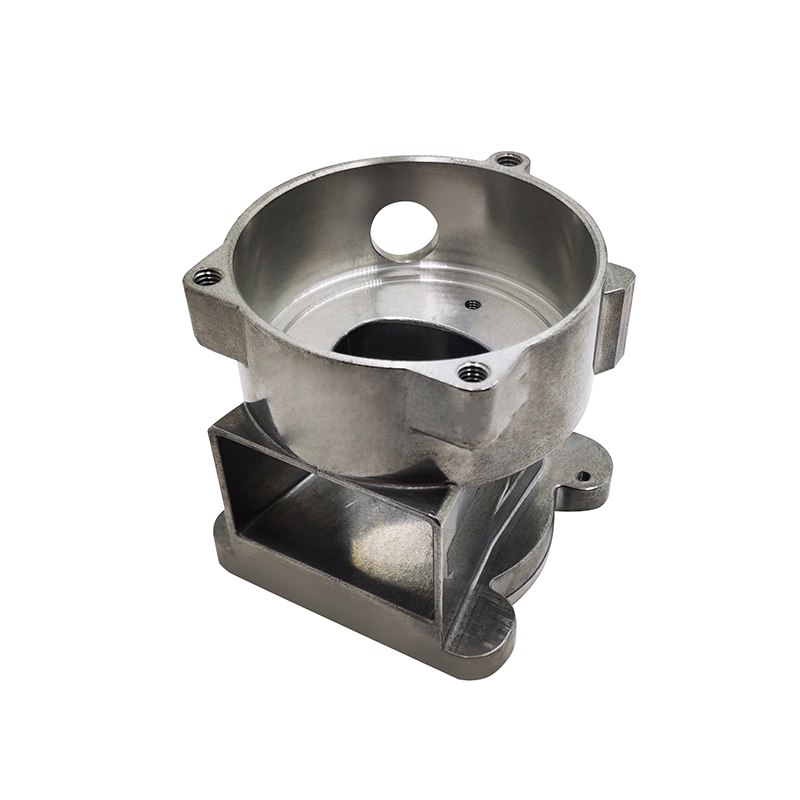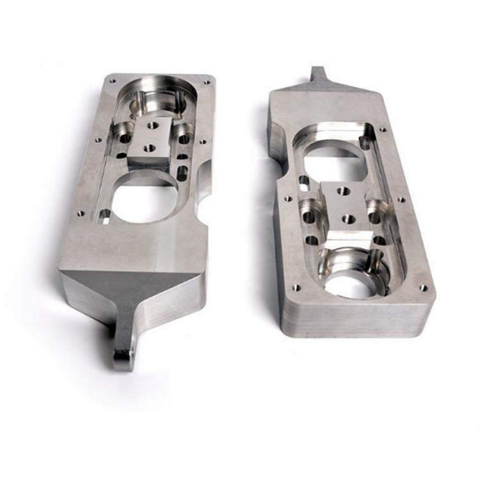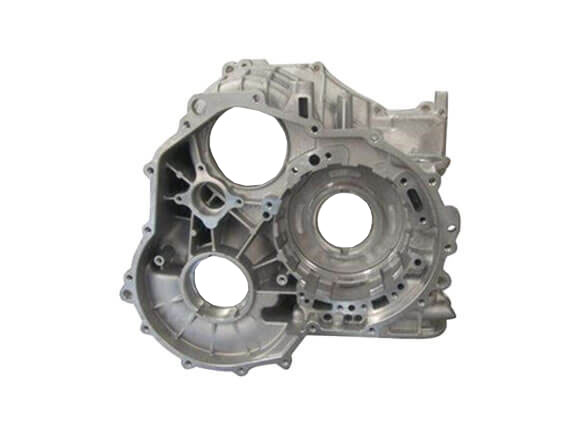Aluminum Casting Explained: Secret Facts and Insights for Market Professionals
Aluminum casting functions as an important procedure in modern manufacturing, forming components throughout numerous industries. Its varied approaches, such as sand and die casting, deal with various manufacturing needs. The distinct properties of aluminum alloys enhance their applicability, yet challenges continue to be in keeping quality and effectiveness. Understanding these facets is vital for sector experts. What are the most up to date developments and ideal practices that can additionally optimize this procedure?
Overview of Aluminum Casting Processes

Trick elements of aluminum casting procedures include the prep work of molds, which may be made from sand, metal, or ceramic materials, depending upon the intended usage. Additionally, temperature control is vital to assure proper melting and solidification of aluminum.
The casting process enables intricate layouts and can accomplish high levels of dimensional accuracy. When cooled, the spreadings might go through finishing procedures such as machining or surface area therapy to meet certain performance criteria. In general, aluminum casting functions as a flexible manufacturing technique, properly satisfying the varied requirements of numerous markets.
Kinds of Aluminum Casting Methods
In the domain name of aluminum casting, various approaches are employed to accomplish different results. Sand casting strategies offer adaptability and cost-effectiveness for complex forms, while die casting processes supply high precision and performance for mass production. Recognizing these methods is essential for choosing the ideal strategy based on job needs.
Sand Casting Strategies
Sand casting methods stand for a fundamental approach in aluminum casting, where sand is used as a mold product to shape molten steel. This process includes developing a pattern from the desired component, which is then put in a sand combination to form a mold and mildew. The sand is compressed around the pattern, and after elimination, it creates a tooth cavity in the form of the part. Molten aluminum is put into this tooth cavity, permitting it to cool and solidify. One considerable benefit of sand casting is its versatility; it can suit huge components and complicated forms. Additionally, the products used are fairly low-cost, making it an easily accessible choice for numerous production applications in the aluminum market.
Die Casting Processes
Die casting procedures are a popular approach for shaping aluminum elements, using high-pressure methods to compel liquified metal right into precisely engineered molds. This procedure is specifically preferred for its capacity to produce complex forms with tight tolerances and a smooth surface. There are 2 key sorts of die casting: warm chamber and cool chamber. Hot chamber die casting appropriates for metals with low melting points, enabling faster manufacturing prices. Alternatively, chilly chamber die casting is excellent for greater melting point metals, calling for a different melting heating system. Both methods enhance performance and minimize material waste, making them important in automotive, aerospace, and customer products industries. Understanding these procedures assists professionals pick the most appropriate strategy for their particular applications.
Material Feature of Aluminum Alloys

Toughness and Durability
Stamina and sturdiness are critical characteristics of aluminum alloys that make them appropriate for numerous casting applications. These products exhibit a beneficial strength-to-weight proportion, permitting the production of light-weight yet robust components. With regard to tensile stamina, specific aluminum alloys can be engineered to withstand considerable lots without flawing. This residential property is specifically vital in sectors such as aerospace and automotive, where efficiency and security are extremely important. Furthermore, aluminum alloys typically retain their mechanical properties under varied temperature conditions, making certain constant performance. The inherent ductility of these alloys likewise permits efficient shaping during the casting process, making it easier to create intricate geometries. In general, the strength and resilience of aluminum alloys contribute significantly to their widespread use in advanced applications.
Rust Resistance Characteristics
While aluminum alloys are prized for their toughness and light-weight homes, their corrosion resistance is another important quality that enhances their viability for different applications. Aluminum naturally creates a safety oxide layer when exposed to dampness, which assists to avoid further oxidation. This integral residential or commercial property makes aluminum alloys specifically useful in environments vulnerable to rust, such as marine and commercial settings. Additionally, various alloy compositions can affect resistance levels, with particular alloys particularly engineered to boost this characteristic. Therapies like anodizing can better improve deterioration resistance by thickening the oxide layer. Subsequently, understanding the deterioration resistance of aluminum alloys is vital for industry experts when picking materials for tasks needing durability and durability in tough environments.
Advantages of Aluminum Casting in Manufacturing
Aluminum casting deals numerous benefits in production, making it a preferred option for numerous sectors. One significant benefit is its light-weight nature, which adds to reduced transportation expenses and improved energy performance in final product. Furthermore, aluminum's exceptional thermal and electric conductivity boosts capability in applications requiring heat dissipation or electrical conduction.
The material's capacity to be cast into elaborate shapes permits layout versatility, reducing the demand for added machining procedures. In addition, aluminum casting exhibits premium rust resistance, bring about longer product life expectancies and lower maintenance expenses.

Common Applications of Aluminum Castings
The flexibility of aluminum casting allows its widespread usage throughout various industries. Common applications include automotive components, where lightweight and corrosion-resistant elements, such as engine blocks and transmission real estates, enhance automobile efficiency. In the aerospace sector, aluminum spreadings are made use of for structural components, supplying strength without adding significant weight.
Furthermore, the electric sector advantages from aluminum castings in manufacturing units and heat sinks, where thermal conductivity is important. The customer items field additionally integrates aluminum spreadings in items like cookware, furnishings, and attractive things, combining looks with capability.
The building market utilizes aluminum castings for architectural aspects, window frames, and fixtures, which give durability and design flexibility. In general, look at this website the diverse applications of aluminum castings highlight their value in modern manufacturing, adding to advancements in performance and product layout throughout numerous areas.
Advancements and Technical Improvements
As industries remain to evolve, developments in aluminum casting innovation are transforming manufacturing processes and item abilities. Advancements in 3D printing and additive production have actually allowed the development of complex geometries that were previously difficult to accomplish with conventional methods. These modern technologies enable fast prototyping, reducing preparations and costs.
In addition, enhancements in mold layout and materials have actually enhanced the casting process by boosting efficiency and minimizing waste. The assimilation of smart production methods, such as IoT tools and real-time information analytics, enables better tracking and optimization of production specifications, resulting in higher top quality outputs.
Growths in aluminum alloys provide improved strength, rust resistance, and light-weight residential or commercial properties, providing to the expanding needs in auto and aerospace sectors. Collectively, these developments are not just boosting performance but likewise satisfying the extensive try this site requirements of modern-day design applications.
Ideal Practices for Quality Control in Aluminum Casting
Making sure high-quality outputs in aluminum casting requires adherence to best practices that include numerous phases of the manufacturing process. First, extensive material examination is essential to verify the quality of aluminum alloys used, as pollutants can considerably influence the end product. Carrying out exact melting and pouring techniques minimizes defects; maintaining ideal temperatures stops oxidation and advertises harmony.
Additionally, mold and mildew layout plays an essential function; making use of computer-aided design (CAD) can enhance precision and minimize human mistake. Routine tracking of the cooling process is critical to prevent warping and contraction. Furthermore, using non-destructive testing approaches, such as ultrasonic or X-ray assessments, helps recognize internal problems without harming the elements.
Finally, developing a feedback loophole with operators and designers fosters continual enhancement, making certain that top quality control steps advance together with technical developments. By following these best methods, manufacturers can improve the integrity and performance of aluminum castings.
Regularly Asked Inquiries
What Are the Environmental Impacts of Aluminum Casting?
The environmental influences of aluminum casting include substantial energy consumption, greenhouse gas discharges, and possible water air pollution from foundry operations. Additionally, bauxite mining for aluminum ore can result in habitat damage and dirt destruction.
Just How Does Aluminum Casting Contrast to Various Other Steel Casting Procedures?
Aluminum casting normally offers advantages in light-weight components and corrosion resistance compared to other processes, such as iron or steel casting, which may supply better toughness yet result in heavier and less corrosion-resistant items. - Precision aluminum casting
What Are Typical Problems in Aluminum Castings and Their Causes?
Typical flaws in aluminum spreadings include porosity, shrinking, and additions. Causes frequently come from incorrect pouring techniques, insufficient mold design, or contamination of the molten steel, influencing the end product's integrity and performance.
What Safety and security Precautions Should Be Taken During Aluminum Casting?
During aluminum casting, important security preventative measures consist of using protective equipment, making certain appropriate ventilation, keeping a tidy work space, Our site managing liquified metal with care, and adhering to well established methods to reduce threats of burns, breathing risks, and accidents.
Just How Can I Boost the Effectiveness of My Aluminum Casting Procedures?
To improve efficiency in aluminum casting procedures, one should optimize mold and mildew style, improve product handling, utilize automated procedures, carry out regular upkeep on equipment, and purchase worker training to enhance abilities and efficiency.
Numerous techniques exist, aluminum casting encompasses numerous primary processes that cater to various applications and demands. Trick aspects of aluminum casting processes include the prep work of molds, which might be made from sand, metal, or ceramic products, depending on the intended usage. Sand casting techniques stand for a fundamental approach in aluminum casting, where sand is used as a mold and mildew material to shape liquified metal. As sectors continue to advance, advancements in aluminum casting technology are transforming manufacturing procedures and product capabilities. Making certain top quality outputs in aluminum casting needs adherence to ideal techniques that encompass various stages of the manufacturing process.